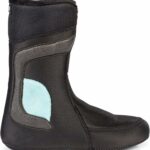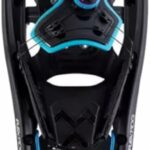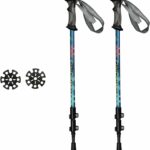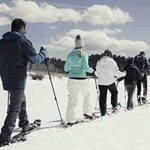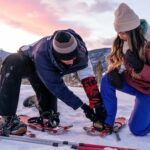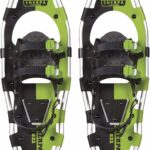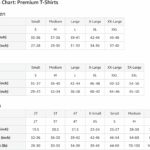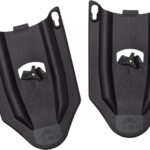You’re probably thrilled about your impending winter adventure, and snowshoes are a crucial part of the experience. But do you know how to properly strap them? Let’s cut to the chase then. In “How To Strap Snowshoes?” you’ll discover straightforward, step-by-step instructions on securing your snowshoes correctly. It’s all about ensuring comfort and safety while you’re trudging through the snow. By mastering this skill, you can focus more on enjoying the breathtaking winter landscape, and less on worrying about a loose snowshoe.
Types of Snowshoes
Snowshoes are a must-have for anyone who enjoys exploring the great outdoors during the winter season. But, before you buy a pair, it’s important to know the array of types available in the market. Snowshoes come in various designs and ideally, the ones you buy should match your planned activity, the snow conditions, and your level of expertise.
Different Materials Used in Making Snowshoes
Traditionally, snowshoes were made from wooden frames and rawhide lacing. Over time, more durable and lightweight materials such as aluminum, plastic, and synthetic fabrics have become the norm. The decking, in most modern snowshoes, is usually made of lightweight, resistant, and flexible materials like Hypalon rubber or neoprene-coated nylon. Frames made from aluminum provide the advantage of being lightweight, durable, and resistant to rust.
Comparing Different Snowshoe Brands
Determining the best snowshoe brand largely depends on personal preference, specific use, and the individual. Some people swear by the durability and functionality of MSR snowshoes, while others find the comfort and lightweight design of Atlas or Tubbs models to be superior. When comparing brands, consider factors such as design, weight, size, and grip.
Types According to Activities: Hiking, Running, Casual
Snowshoes can be further categorized according to the activities they are designed for. If you’re more of a casual walker, you might consider recreational snowshoes that have modest traction systems and are designed for easy walking on flat to light rolling terrains. Running snowshoes feature a narrower, lightweight design for enhanced stride efficiency, while hiking (or mountaineering) models have aggressive crampons and bindings, designed to handle steep, icy terrains.
Types of Snowshoe Bindings
One critical component of a snowshoe is its binding – the part that connects your boot to the snowshoe. Understanding the different types of bindings can be key to your comfort and ease of movement on the snow.
Rotating Bindings
Also known as pivot or full rotation bindings, these are attached at the back of the snowshoe and allow your foot to pivot downward when you lift your foot. This is especially beneficial when climbing steeps as the tails drop, digging the crampons into the snow to prevent backsliding.
Fixed Bindings
These types are attached to the full length of the snowshoe and move along with your foot as you walk. They force the snowshoe tail up as you lift your foot. While they require less effort to lift compared to rotating bindings, they tend to fling snow up the back of your legs.
Hybrid Bindings
As suggested by the name, hybrid bindings combine the best of both rotating and fixed bindings. They can pivot up or down, depending on your preference, giving you a customized snowshoe experience.
Step-by-Step Guide on Strapping Snowshoes
Knowing how to properly strap your snowshoes can greatly improve your snowshoeing experience. Let’s break down the process to make it as simple as possible.
Preparation
Before strapping your snowshoes, be sure you’re on a flat and hard surface, or hard-packed snow. This will ensure you have a solid footing and won’t put unnecessary pressure on the snowshoes.
Feet Placement
It’s crucial to position your feet correctly to ensure maximum comfort and prevent accidental loss or damage to the snowshoes. The key rule here is to ensure that your toes do not extend beyond the front crampons, and that the balls of your feet are directly over the pivoting line of the bindings.
Securing the Straps
Once your foot is in the binding, secure the straps starting from the toe area and working your way back towards the heel. The straps should be snug but not too tight to prevent discomfort or circulation issues.
Proper Posture in Using Snowshoes
Understanding the correct way to move in your snowshoes can save you a lot of unnecessary energy expenditure and prevent muscle discomfort or injuries.
Walking with Snowshoes Properly
When walking, the key is to take wider and slightly exaggerated strides to prevent stepping on the edges of your snowshoes. Lead with your poles and keep your back straight and balanced.
Maintaining Balance and Control
Practice keeping control on different terrains. When moving uphill, put your weight on the uphill snowshoe and use its crampons for grip. In descent, keep your weight back and relax your knees for balance.
Common Mistakes in Strapping Snowshoes
Avoid these common mistakes to optimize your enjoyment and safety while snowshoeing.
Over tightening Straps
While it’s necessary to ensure your foot is secure in the snowshoe, over tightening the straps can cause discomfort and affect your circulation.
Incorrect Feet Placement
Incorrect foot placement can put strain on your muscles and also damage your snowshoes. Always make sure the ball of your foot is centered over the pivot point of your snowshoe.
Using Wrong Type of Snowshoes for Different Activities
Using running snowshoes for hiking or vice versa can hinder your performance and potentially damage your snowshoes. Always choose the right type of snowshoes for the activity you’re planning.
Snowshoe Maintenance
Like any outdoor gear, proper maintenance can greatly extend the lifespan of your snowshoes.
Cleaning Snowshoes
Make sure to clean your snowshoes after each use, removing any snow or ice. Use warm water and mild detergent to clean away any dirt or grime, then dry them off before storage.
Checking For Strap Damage
Review your straps regularly for signs of wear or damage. If necessary, replace them before your next outing.
Storage Tips
Store your snowshoes in a cool, dry place, away from direct sunlight. It helps to hang them by the frame to prevent deformities.
Safety Measures in Using Snowshoes
Efficiency is key in snowshoeing, but safety should always be your foremost concern.
Surface Evaluation
Prior to any excursion, evaluate the snow surface. Be aware of avalanche danger and always take heed of local advisories. Steer clear of bodies of water where ice may not be as solid as it appears.
Checking Weather Conditions
Always check the weather forecast before heading out. Rapid changes in weather conditions can turn an enjoyable trek into a dangerous ordeal.
Wearing Appropriate Attire
Dress in layers that can be added or removed based on temperature changes. Avoid cotton and opt for moisture-wicking materials instead. Make sure your footwear is insulated and waterproof.
Common Challenges and Solutions in Strapping Snowshoes
With practice, strapping snowshoes becomes second nature. However, you might face some hurdles, particularly if you’re just starting.
Difficulty in Securing Straps
If you find the straps hard to secure, try adjusting them before you put your feet in. Use the levers or buckles on the bindings to get a custom fit.
Solving Feet Discomfort
Properly fitted snowshoes and boots are essential to prevent discomfort. If pain persists, consider using cushioned insoles and ensure you don’t over tighten the straps.
Adjusting Straps According to Boot Size
Most bindings are adjustable. However, it’s essential to ensure your snowshoes’ bindings can accommodate your boots’ size. If they don’t, you may need to get larger bindings.
Tips on Using Different Types of Snowshoe Bindings
Mastering how to use different types of snowshoe bindings can significantly enhance your mobility and comfort on the snow.
Tips on Using Rotating Bindings
Get familiar with your stride when using rotating bindings. Practice will make you more comfortable with them, and remember the benefits that they provide, including improved traction in steep terrain.
Proper Use of Fixed Bindings
When using fixed bindings, learn to accept that a bit of snow may get kicked up onto the back of your legs but appreciate the easy lifting motion they provide.
Handling Hybrid Bindings Correctly
Hybrid bindings offer a blend of the other two types’ benefits but make sure to adjust to the most comfortable rotation limit.
Advanced Techniques in Strapping and Using Snowshoes
Beyond the basic movements, mastering these advanced techniques will allow you to tackle more challenging terrains confidently.
Using Poles for Stability
Trekking poles provide additional balance and help reduce the load on your knees. Ensure they’re adjusted to the correct height: your arms should bend at a 90-degree angle when holding the poles.
Ascending and Descending Techniques
For ascending steep slopes, use the toe or step-up technique, planting your crampons into the snow for traction. In descents, maintain a wide stance, bend your knees slightly, and walk slowly. Your pacing and body control are key here.
Stride Techniques for Uphill and Flat Surfaces
Uphills require shorter strides, helping you maintain a consistent rhythm. On flat terrains, longer strides can help conserve energy and cover more ground.
Snowshoeing is a fantastic winter activity that’s enjoyed by many across the globe. By ensuring you’ve got the right type of snowshoes for your activity and understanding how to wear and maintain them properly, you’ll be set to hit the snow-covered trails in no time!
- What Snowboard Bindings Should I Get? - January 23, 2024
- What Size Screws For Snowboard Bindings? - January 23, 2024
- How To Snowmobile On Water? - January 23, 2024

